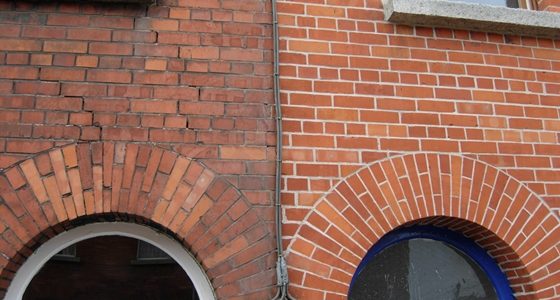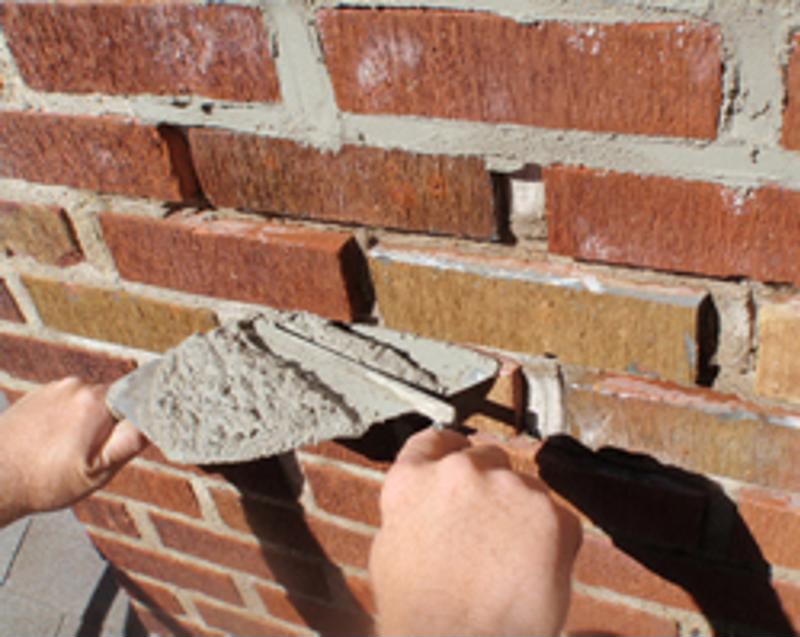
Facilities made of brick and stone are particularly attractive for building owners because they require relatively little maintenance. In fact, brick facades can last hundreds of years without requiring major repairs. But building managers should keep in mind that even the sturdiest brick structure will require upkeep from time to time.
Crumbling masonry joints can turn into an eyesore for tenants and a safety risk for pedestrians. When left unchecked, that crumbling masonry can even lead to water seepage behind the brick façade, damaging the building’s structural integrity. Bricks can eventually loosen, leading to costly and extensive repairs. And insects and even small vermin can penetrate the building’s envelope, causing additional structural issues, as well as health concerns.
 Unlike brick, which can last a century or more without repair, mortar joints will need more frequent maintenance and repairing to avoid structural issues and health concerns.
Unlike brick, which can last a century or more without repair, mortar joints will need more frequent maintenance and repairing to avoid structural issues and health concerns.Visual inspections are the first step to ensuring that the facility’s brick façade is structurally sound. The next step is understanding what to do when an inspection reveals crumbling or compromised mortar. Here’s what you need to know about tuckpointing:
“While bricks can last a century or more without repair, the same isn’t true of mortar joints.”
The Lifespan of Mortar Joints
While bricks can last a century or more without repair, the same isn’t true of mortar joints. The space between your building’s bricks is typically filled with mortar and grout. Over time, this mortar or grout can deteriorate, mainly due to water penetration and weather conditions. In general, mortar joints will last roughly 20 to 30 years, though the exact amount of time depends on a combination of the material used to make the mortar joint and the severity of weather conditions in your area.
You might think that mortar joint deterioration requires sophisticated training, but a visual inspection will typically reveal the cracks, crumbling or discoloration from water damage that should trigger you to consider tuckpointing.
Basics of Tuckpointing
Tuckpointing is sometimes also referred to as repointing. It’s the process of repairing the mortar joints in brick masonry walls by removing a certain portion of the old mortar, by grinding or raking it out with specialized tools. Professionals will analyze the existing mortar or grout and bricks to figure out what type of fresh material will be compatible while creating a visually appealing finish. They then fill in the mortar joists with this fresh mortar or grout.
Experienced tuckpointers will also be well-versed in how to control the silica exposure that can arise during this process. Silica is a mineral that’s found in bricks, mortar and other construction material, and the Occupational Safety and Health Administration has strict guidelines around controlling exposure to it. Vacuum dust collection systems, for instance, have been shown to limit the potential respiratory dangers of silica.
Tuckpointing can be a labor-intensive endeavor that also requires a high level of know-how: experienced tuckpointers will assess the right depth of mortar that’s necessary to grind or rake out, as well as the mortar material that’s compatible with your facility’s bricks. Using an incompatible material does run the risk of causing damage to the bricks themselves, so think twice before trusting this task with a less-experienced contractor. When tuckpointing is done properly, it can dramatically improve the structural integrity of the wall and create a more waterproof envelope.
“Loose bricks in your building’s façade need to be addressed immediately.”
The Timing of Tuckpointing
Tiny fissures in your brick’s mortar might seem easy to overlook or a bit of crumbling grout may get shoved to the back burner because it seems small. Yet tuckpointing shouldn’t slide down your to-do list for long. That’s because these seemingly small problems can quickly escalate in terms of both damage and cost if they’re not properly addressed. When a brick building is neglected for far too long, the only option may be to tear down that portion of the façade and relay it.
If you spot loose bricks in your building’s façade, the issue is critical and needs to be addressed immediately. It may be too late to repair the loose bricks with simple tuckpointing, but a professional will be able to create a customized plan for which portions of the façade require relaying and which other portions might be strengthened with tuckpointing.
If you instead see cracks or crumbling bits of mortar, call Clean & Polish to assess whether tuckpointing makes sense and how much of the façade should be repaired. While we will be able to assess your facility quickly and with no expense, you may opt to use a scratch test to determine the mortar’s integrity. To do that, simply run the edge of a key along the mortar of your building. If the key causes a scratch to appear in the mortar joint, it’s a sign that the mortar may be compromised and needs attention.


